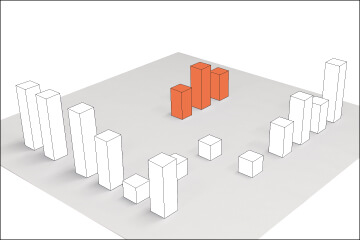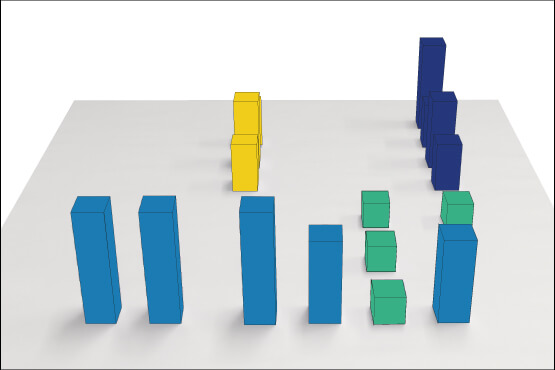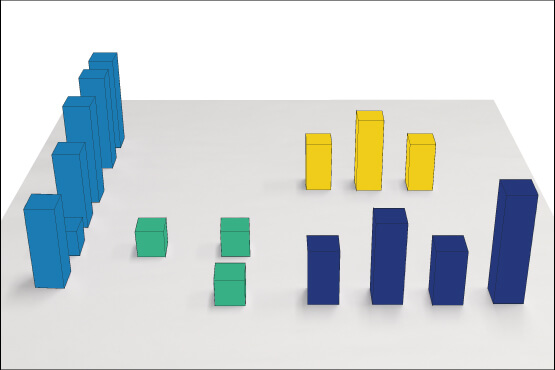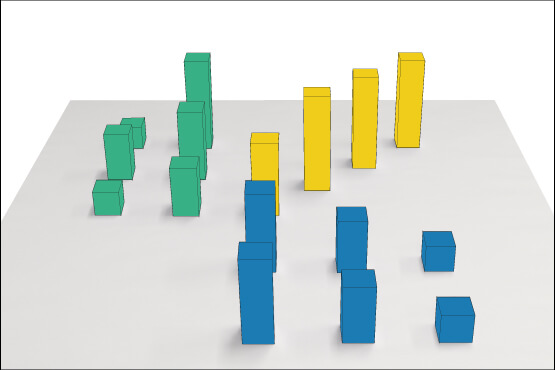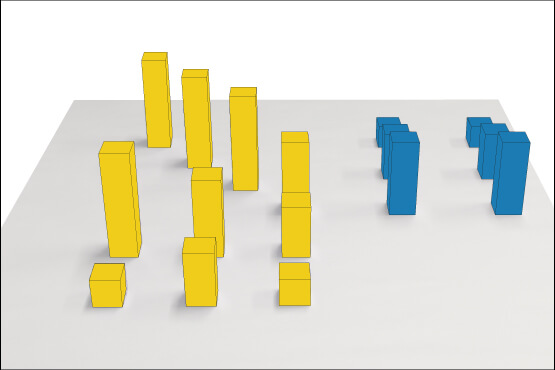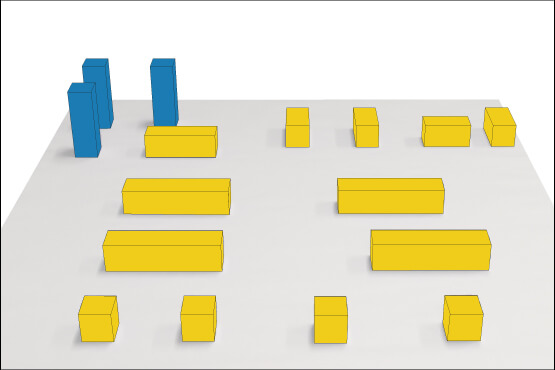Design
The design of the 6 exemplar physicalizations is informed by the well-known static physical bar charts often used in physicalization. Each of the physicalizations consists of 16 blue acrylic objects that vary in 4 lengths. This allowed us to create a range of complexity, while keeping them similar in density:
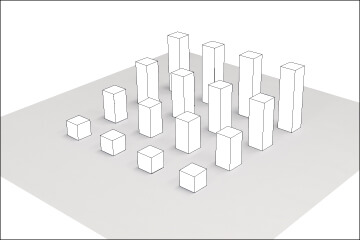
Phys1
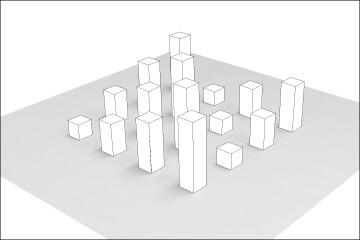
Phys2

Phys3
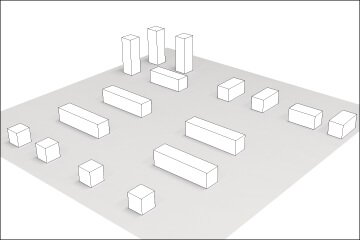
Phys4
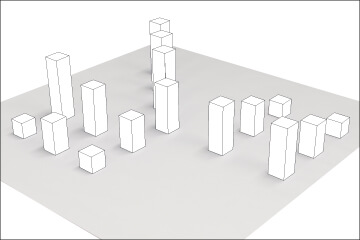
Phys5

Phys6
The layouts of the 6 physicalizations were created by applying different visual properties informed by what is known in 2D visualization as pre-attentive visual properties:
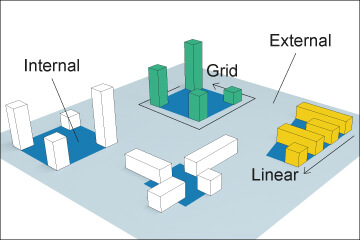
Proximity
Proximity was used to create differences in internal and external distances between objects. Additionally, we created two different types of spatial relations: either in a grid or linear fashion.

Continuity
Continuity was used to create differences in perceived connectedness, either by using objects of similar size or objects of increasing size in a consecutive manner.
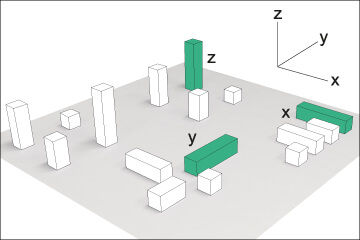
Atomic orientation
Atomic orientation was used to create differences in the orientation of the individual objects within the physicalization, either in the x, y or z plane.


